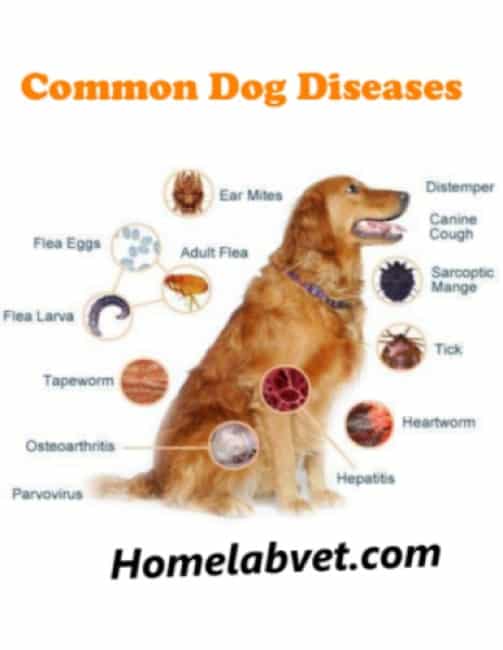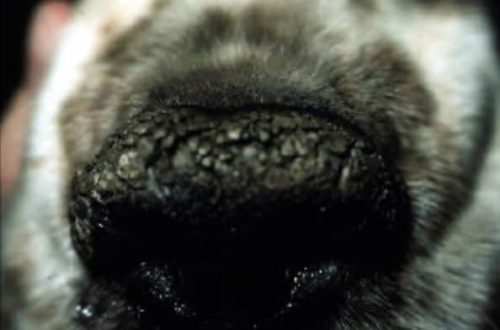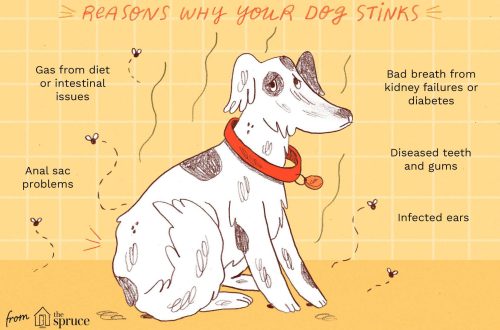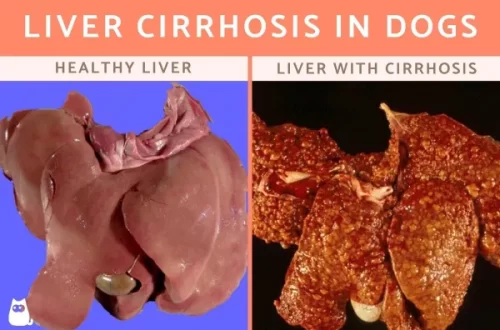
Viral diseases of dogs
Canine parvovirus enteritis
This disease is caused by a virus of the same name, which is very stable in the external environment and can persist in favorable conditions for up to six months, and this virus is also resistant to most disinfectants. The transmission of the infectious agent occurs through direct contact with a sick animal, as well as through care items and people who have been in contact with a sick animal. The most susceptible are puppies and young dogs, as well as animals that have not been vaccinated.
The main symptoms are lethargy, refusal to feed, fever, vomiting and bloody diarrhea. Diagnosis includes a doctor’s examination, a complete blood count, rapid tests to identify the causative agent of the disease.
If the veterinarian diagnoses canine parvovirus enteritis, then symptomatic treatment, prevention of secondary bacterial infections, and aggressive infusion therapy are prescribed. Mortality among puppies can reach 70% even with timely treatment. Preventive vaccination is the best way to protect against this disease.
infectious hepatitis
Caused by canine adenovirus type I. The virus is ubiquitous and can infect foxes, wolves, bears, badgers, and raccoons. Young dogs and puppies under one year of age are most susceptible.
Symptoms can vary greatly in severity. The very first symptom is an increase in body temperature; in some cases, due to the rapidity of the course of the disease, death occurs already in the first day after the onset of symptoms of the disease.
Read more about this disease in the article “Infectious hepatitis in dogs.”
Plague of dogs or plague of carnivores
It is caused by the canine distemper virus, which also infects other members of the canine family. The virus is ubiquitous, unstable in the environment and sensitive to most disinfectants. Infection mainly occurs by airborne droplets. Puppies that have not been vaccinated are most susceptible.
Clinical symptoms depend on which organ system is affected. There are respiratory (most common), gastrointestinal and nervous system symptoms (rare, poor prognosis). Both mucous and purulent discharge from the nose and eyes, coughing, sneezing, fever, refusal to eat, vomiting, diarrhea can be observed. When the nervous system is damaged, tics, convulsions, paralysis, and impaired coordination of movements appear. Recovered dogs may have tooth enamel hypoplasia and hyperkeratosis of the paw pads.
Diagnosis includes a doctor’s examination, clinical studies, rapid tests for antigen detection and differential diagnosis. Treatment is symptomatic and supportive, based on the prevailing symptoms, and there is no specific treatment. Preventive vaccination is a good way to protect against canine distemper.
Rabies
A deadly viral disease that affects warm-blooded animals and humans. It occurs everywhere, with the exception of only a few countries recognized as free from this disease due to strict quarantine measures and vaccination of wild animals that carry this disease.
For Russia, rabies is an enzootic disease, that is, this disease persists on the territory of the country and its foci constantly appear. It is for this reason that in Russia it is mandatory to vaccinate domestic dogs and cats against rabies, this procedure must be repeated annually.
The carriers of the rabies virus are wild animals: foxes, raccoons, badgers, wolves and others. In the urban environment, the main carrier of this deadly virus is street dogs and cats. Therefore, it would be a delusion to believe that rabies can only be contracted in the wild, and this often happens in big cities. The main threat of infection to humans is posed by sick animals.
The rabies virus severely affects the nervous system, hence the clinical picture of the disease: unusual behavior, a change in characteristic behavior (aggression or, conversely, affection) or excessive excitability, impaired coordination of movements, perverted appetite, the appearance of light, noise, hydrophobia, spasms, muscle paralysis , inability to eat. The last stage of the disease is manifested by convulsions, paralysis, coma and ends in death. The main method of transmission of the pathogen is through the saliva of sick animals, it is possible for predators to become infected when eating the remains of animals that died of rabies.
Important!
If a viral infection is suspected or if symptoms characteristic of viral infections are present, timely contact with a veterinary clinic, prompt diagnosis and initiation of treatment significantly improve the prognosis. Avoid the use of so-called folk remedies, such as, for example, drinking vodka – this is not at all effective, and in some cases dangerous for your pet.





